5 Design Elements That Improve Everyday Wellbeing
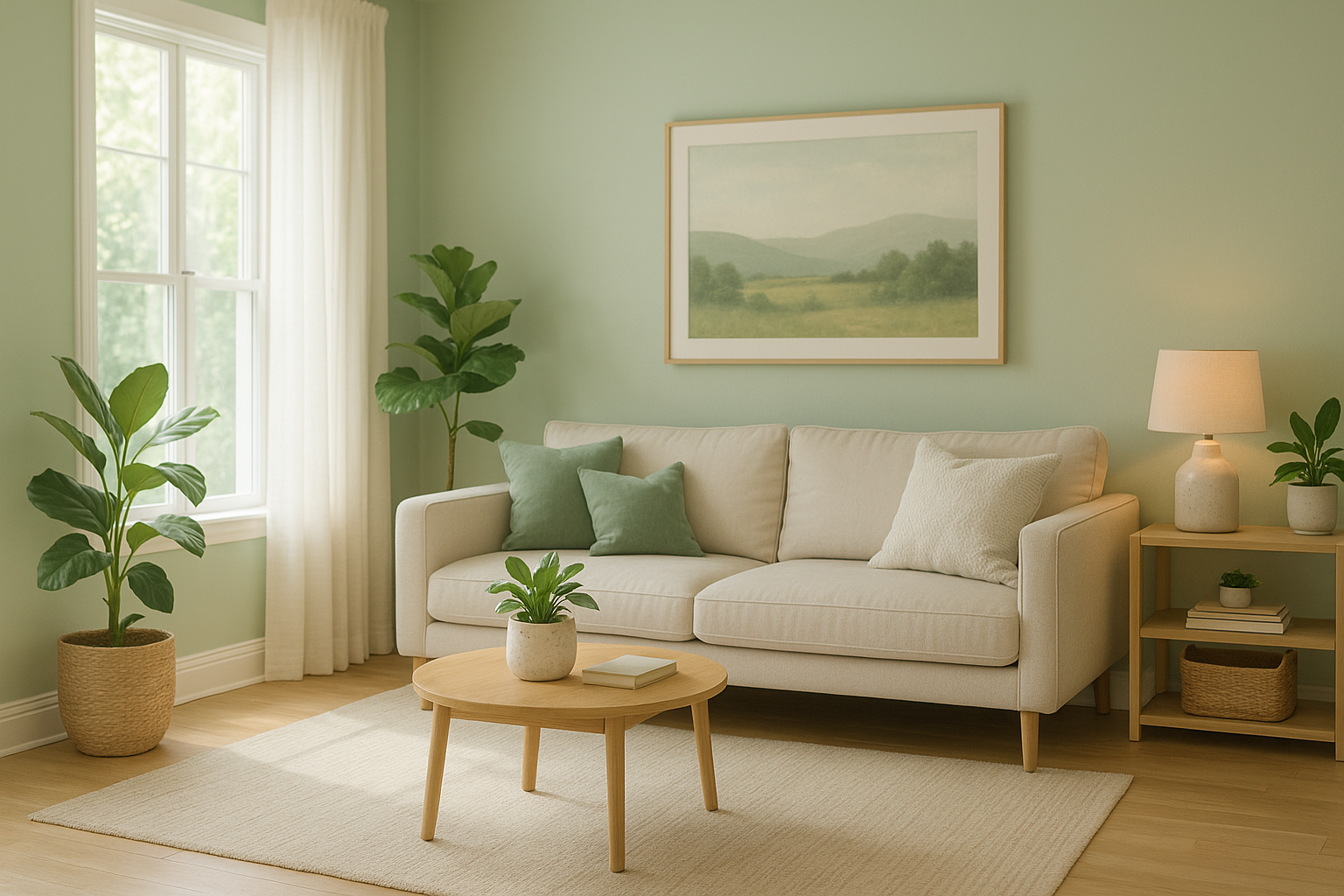
Introduction
When we consider how our surroundings affect our health, it’s clear that specific design elements play a crucial role in shaping our daily experiences. While our comprehensive guide on home design and health covered the broad relationship between living spaces and wellbeing, this article zooms in on five specific design elements that can transform your everyday experience. These powerful components don’t require massive renovations or designer budgets—they’re accessible changes that yield significant improvements to your physical and mental state.
The five design elements we’ll explore are scientifically proven to enhance wellbeing through direct biological and psychological pathways. From the quality of light that regulates your hormones to the strategic use of color that affects your emotional state, these elements work subtly but powerfully to create environments that support your health. By understanding and implementing these specific design components, you can create spaces that not only look beautiful but actively contribute to your everyday wellbeing.
What You’ll Discover in This Article
For a comprehensive overview of how home design affects health, check out our complete guide to home design and health.
In this focused exploration of design elements that improve wellbeing, we’ll cover:
🌞 Strategic lighting solutions that support your body’s natural rhythms and boost mood
🎨 Color psychology applications for creating spaces that evoke specific emotional responses
🌿 Biophilic design principles that satisfy our innate connection to nature and reduce stress
🔊 Acoustic considerations for creating environments that protect your mental clarity
🧘 Multi-sensory design approaches that create fully immersive, restorative environments
Each of these elements offers practical, science-backed ways to enhance your daily experience through intentional design choices. Let’s explore how these specific components can transform your everyday wellbeing.
These five design elements have been scientifically proven to enhance everyday wellbeing through both physical and psychological pathways.
The Science Behind Design Elements and Wellbeing
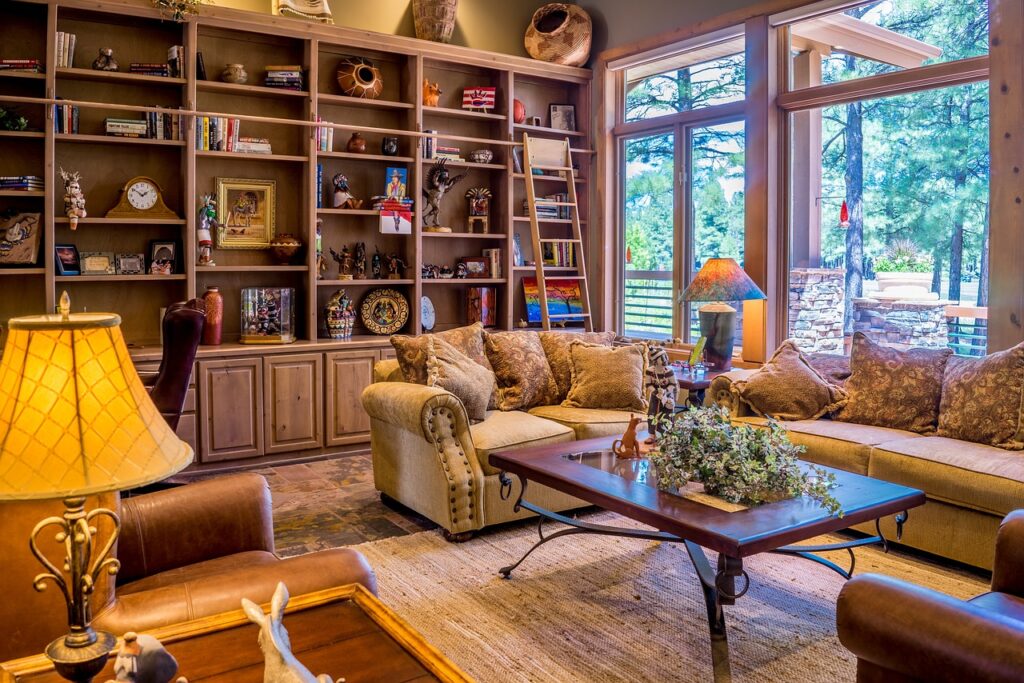
The connection between specific design elements and human wellbeing isn’t just aesthetic preference—it’s rooted in rigorous research. According to a landmark study published in the International Journal of Environmental Research and Public Health, targeted design interventions can reduce cortisol levels (a key stress hormone) by up to 60% and improve cognitive function by 26%.
These remarkable effects occur because our bodies and minds respond to environmental cues at both conscious and subconscious levels. The Cornell University Healthy Futures Design Lab has documented how specific design elements trigger neurotransmitter production, affect autonomic nervous system responses, and influence behavior patterns. Their research shows that properly implemented design elements don’t just temporarily alter mood—they can create lasting improvements in physical health markers, sleep quality, and psychological wellbeing.
What makes these five particular elements so powerful is their direct biological impact. Unlike purely decorative considerations, these elements work with your body’s natural systems. For instance, properly designed lighting doesn’t just look better—it synchronizes with your circadian rhythms, regulating hormones that control everything from sleep quality to immune function. Similarly, biophilic design elements satisfy evolutionary needs for connection to nature, reducing blood pressure and anxiety levels measurably within minutes of exposure.
The most exciting aspect of these findings is their accessibility. While comprehensive home renovations may be out of reach for many, these five specific design elements can be implemented in virtually any space, regardless of size or budget constraints.
Research from environmental psychology demonstrates how specific design elements trigger measurable physiological and psychological responses.
Strategic Lighting: The Foundation of Wellbeing Design
Lighting isn’t just about visibility—it’s the most powerful environmental factor affecting your biological rhythms, mood regulation, and cognitive performance. Proper lighting design works directly with your body’s systems to support health at a fundamental level.
How Light Affects Your Biology
The human body evolved with natural light as its primary time-keeper, and our internal processes remain exquisitely sensitive to light cues:
- Circadian regulation: Blue-rich morning light suppresses melatonin, promoting alertness; warm evening light allows melatonin production for sleep readiness
- Hormone balance: Light exposure patterns influence cortisol, serotonin, and dopamine levels throughout the day
- Visual comfort: Proper lighting reduces eye strain, headaches, and visual fatigue
- Energy efficiency: Strategic natural light reduces electricity consumption and associated costs
Research from Harvard Medical School demonstrates that proper lighting alone can improve sleep quality by 42%, reduce depression symptoms by 30%, and boost daytime energy levels by 24%.
Implementing Strategic Lighting
Transform your spaces with these specific lighting improvements:
- Layer your light sources: Combine ambient (general), task (focused), and accent (decorative) lighting in each room
- Match light to activity: Use cooler, brighter light (4000-5000K) for focused work; warmer, dimmer light (2700-3000K) for relaxation
- Install dimmer switches: Allow light intensity adjustment throughout the day ($15-40 per switch)
- Position workspaces near windows: Natural light should fall from the side, not behind or in front of screens
Pro Tip: Create a “lighting schedule” that mimics natural patterns. Use programmable bulbs or smart lighting systems that automatically transition to warmer tones in the evening. This signals your body to begin melatonin production, improving sleep quality significantly.
For bedrooms specifically, install blackout curtains or blinds to create true darkness during sleep, and use amber night lights that don’t suppress melatonin if you need visibility during nighttime bathroom visits.
Strategic lighting design with layered sources and adjustable intensity supports biological rhythms and enhances mood throughout the day.
Color Psychology: Emotional Design Through Hues
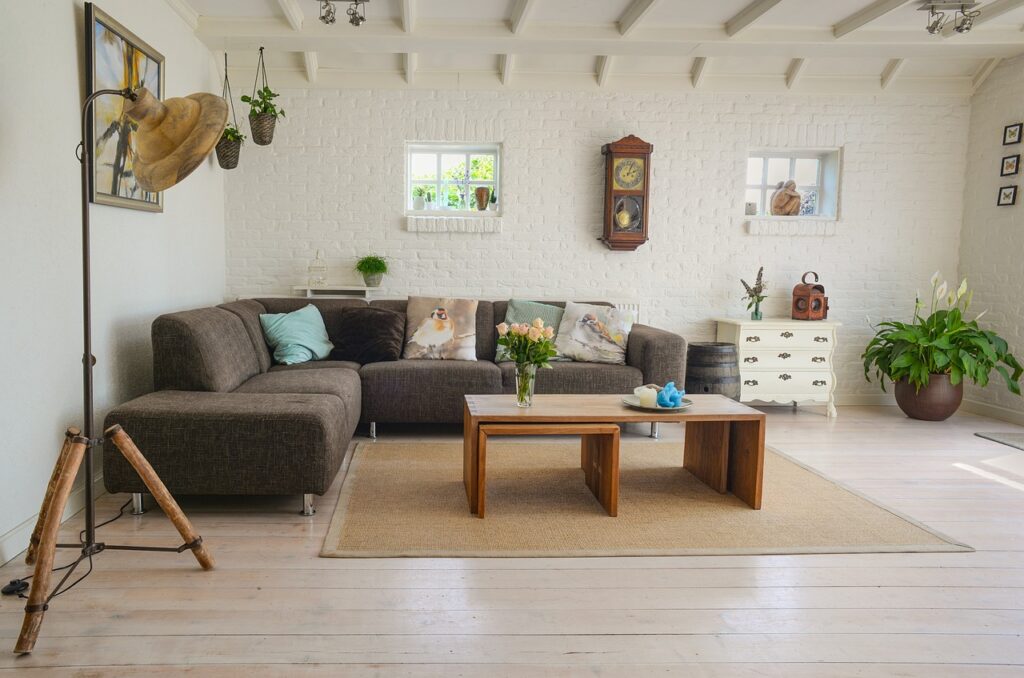
Color affects us on both physiological and psychological levels, making it a powerful tool for wellbeing design. Different hues trigger specific emotional and physical responses that can be strategically employed to support various activities and states of mind.
The Science of Color Response
Our relationship with color goes beyond preference—it creates measurable bodily reactions:
- Blue tones: Lower blood pressure and heart rate; promote feelings of calm and focus
- Green hues: Reduce eye strain and stress; enhance creativity and restoration
- Yellow shades: Stimulate optimism and energy; can increase metabolism
- Red tones: Increase heart rate and alertness; stimulate passion and appetite
A University of Texas study found that properly selected color schemes improved productivity by 15% and reduced anxiety by 28% compared to environments with poorly chosen color palettes.
Strategic Color Implementation
For maximum wellbeing benefits, consider these targeted applications:
| Room | Recommended Colors | Wellbeing Effect |
|---|---|---|
| Bedroom | Blues, lavenders, soft greens | Improved sleep quality, reduced anxiety |
| Home office | Blues, greens with yellow accents | Enhanced focus with bursts of energy |
| Kitchen | Yellow, terracotta, warm whites | Increased sociability, appetite stimulation |
| Living areas | Nature-based neutrals with strategic accents | Versatility for different moods and activities |
The 60-30-10 rule provides a balanced approach: use your primary color for 60% of the room (walls, large furniture), a secondary color for 30% (accent furniture, textiles), and an accent color for 10% (accessories, artwork).
For rental spaces where painting isn’t possible, use textiles, artwork, and accessories to introduce color therapy benefits. Large tapestries, removable wallpaper, and strategic lighting with colored bulbs or filters can transform a space without permanent changes.
As noted in our comprehensive guide to home design and health, color isn’t just decorative—it’s a functional element that directly affects your physiological and psychological state throughout the day.
Strategic color selection creates environments that support specific emotional states and activities while reducing stress and enhancing focus.
Biophilic Design: Nature Connection for Stress Reduction
Our innate connection to nature—biophilia—is hardwired into our biology. Biophilic design elements satisfy this deep-seated need by incorporating natural features, materials, and patterns into built environments, resulting in profound wellbeing benefits.
Implementing Biophilic Elements
Create nature-connected spaces with these specific strategies:
- Live plants: Choose species appropriate for your light conditions and maintenance capacity
- Low-light options: Snake plants, ZZ plants, pothos
- Air-purifying varieties: Spider plants, peace lilies, rubber plants
- Place at least one plant within your field of vision in main living areas
- Natural materials: Incorporate wood, stone, cotton, wool, and other minimally processed materials
- Replace synthetic surfaces with natural alternatives when possible
- Use wood elements with visible grain patterns
- Choose textiles made from plant or animal fibers
- Nature-inspired patterns: Select designs that echo natural forms
- Textiles with botanical or organic patterns
- Wallpapers or art featuring fractal patterns
- Irregular, non-repeating designs that mimic natural variation
- Water elements: Introduce the sight and sound of water
- Small tabletop fountains ($30-75)
- Digital displays of water scenes
- Aquariums for both visual interest and living elements
- Natural light maximization: Design to capture available sunlight
- Use reflective surfaces to bounce light deeper into spaces
- Choose translucent window coverings that maintain privacy while admitting light
- Position important activities in naturally well-lit areas
Pro Tip: Create a “plant bathhouse” by bringing houseplants into your bathroom when showering. The steam benefits most plant types, while the plants transform an ordinary routine into a spa-like experience that reduces stress hormones and enhances mood.
Studies show that even modest biophilic interventions produce significant results. Research published in the Journal of Physiological Anthropology found that simply interacting with indoor plants reduced physiological and psychological stress by lowering blood pressure, decreasing heart rate, and lessening subjective feelings of anxiety.
Biophilic design elements satisfy our innate need for nature connection, reducing stress hormones and improving cognitive function.
Acoustic Design: Creating Sonic Comfort
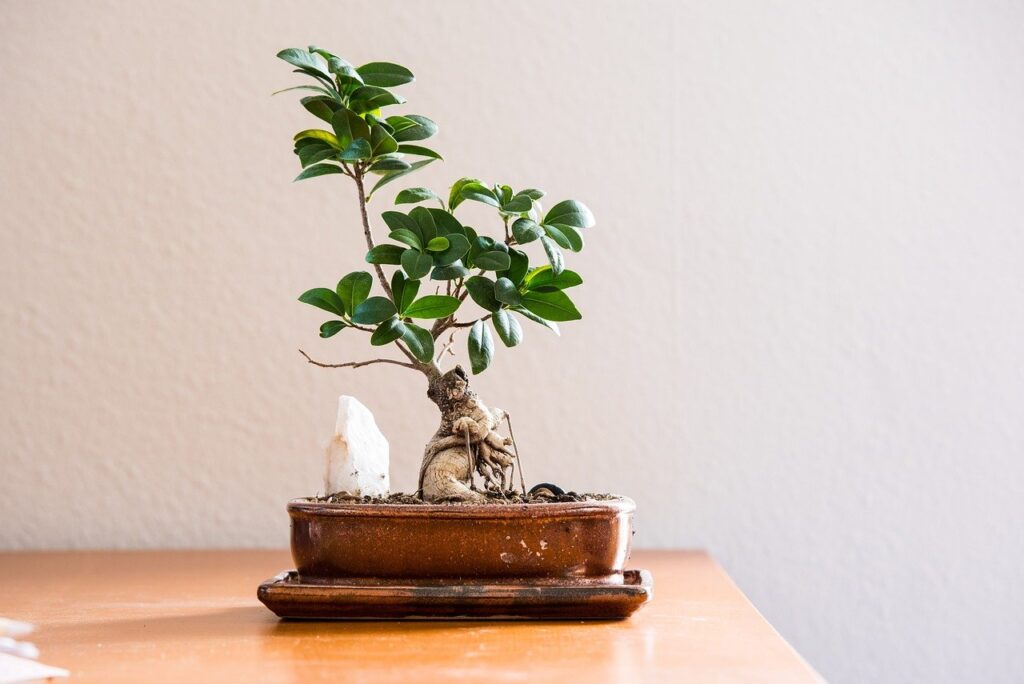
While often overlooked in home design, the acoustic environment significantly impacts stress levels, sleep quality, cognitive performance, and overall wellbeing. Strategic acoustic design creates spaces that support mental clarity and emotional balance.
The Hidden Impact of Sound
Research from the World Health Organization shows that continuous exposure to noise above 65 decibels increases stress hormone production by 40% and raises blood pressure. Even in homes, unwanted sound creates constant cognitive load as your brain processes these stimuli.
Common household sound issues include:
- External noise (traffic, neighbors, outdoor equipment)
- Internal noise (HVAC systems, appliances, plumbing)
- Echo and reverberation in hard-surfaced rooms
- Sound transmission between spaces
A Penn State University study found that implementing targeted acoustic interventions in homes reduced reported stress levels by 34% and improved sleep quality by 29%.
Creating Acoustic Comfort
Transform your sonic environment with these specific strategies:
For existing homes:
- Add soft surfaces to absorb sound: area rugs, upholstered furniture, textile wall hangings
- Install acoustic panels disguised as artwork ($100-300 per panel)
- Use bookshelves filled with books along shared walls
- Apply weatherstripping to doors and windows ($10-30 per application)
- Place rubber pads under appliances to reduce vibration ($15-25)
For apartments and rental units:
- Use free-standing bookshelves as sound barriers
- Hang heavy curtains extending beyond window frames
- Place draft stoppers at the bottom of doors ($15-25)
- Use white noise machines to mask unavoidable sounds ($25-50)
- Apply removable acoustic tiles to problem walls ($2-5 per square foot)
For work-from-home spaces specifically, create a “sound zone” using room dividers with sound-absorbing materials, directional microphones for calls, and noise-cancelling headphones when complete silence is needed.
Strategic acoustic design reduces stress by minimizing unwanted sound and creating spaces that support concentration and relaxation.
Multi-Sensory Design: Creating Fully Immersive Environments
The most effective wellbeing-enhancing spaces engage all five senses in harmony. Multi-sensory design considers the complete sensory experience, creating environments that support wellbeing through multiple pathways simultaneously.
Beyond the Visual: Engaging All Senses
While visual elements typically dominate design discussions, our other senses powerfully influence our experience:
- Touch: Tactile experiences affect comfort, relaxation, and physical wellbeing
- Smell: Olfactory input directly influences the limbic system, affecting emotions and memory
- Sound: Acoustic elements impact stress levels, focus, and mood
- Taste: Though indirect in design, spaces can enhance culinary experiences
A study from Oxford University’s Crossmodal Research Laboratory found that multi-sensory environments increased positive emotional responses by 38% compared to spaces designed primarily for visual appeal.
Creating Multi-Sensory Wellbeing Spaces
Implement these specific strategies for each sense:
For touch:
- Vary textures throughout your space (smooth, rough, soft, firm)
- Include different weight textiles (light sheers to heavy knits)
- Consider temperature variations in materials (cool metals, warm woods)
- Provide options for physical comfort (supportive seating and ergonomic surfaces)
For smell:
- Use essential oil diffusers with scents proven to affect mood:
- Lavender for relaxation
- Citrus for energy
- Rosemary for focus
- Place fragrant plants strategically (jasmine, lavender, herbs)
- Use simmering pots with spices for natural air freshening
- Ensure good ventilation to prevent scent overload
For sound:
- Create a “soundscape” with nature recordings, instrumental music, or white noise
- Consider room acoustics when selecting materials and furnishings
- Minimize mechanical noise from appliances and systems
- Use water features for calming auditory inputs
For taste (indirect):
- Design eating areas that enhance food appreciation
- Use open shelving to display beautiful food items
- Create comfortable, inviting dining spaces that encourage mindful eating
Attention: When creating multi-sensory environments, be mindful of sensory sensitivities. What feels pleasantly stimulating to one person may be overwhelming to another. Create adjustable elements (dimmable lights, optional scents, controllable sounds) that can be customized to individual needs.
For seasonal variations, adjust your sensory elements to align with natural cycles—lighter textures and fresher scents in spring/summer, heavier textiles and warmer aromas in fall/winter. This helps maintain connection to natural rhythms that support biological wellbeing.
Multi-sensory design creates fully immersive environments that support wellbeing through multiple sensory pathways simultaneously.
Putting It All Together: Your Wellbeing Design Action Plan
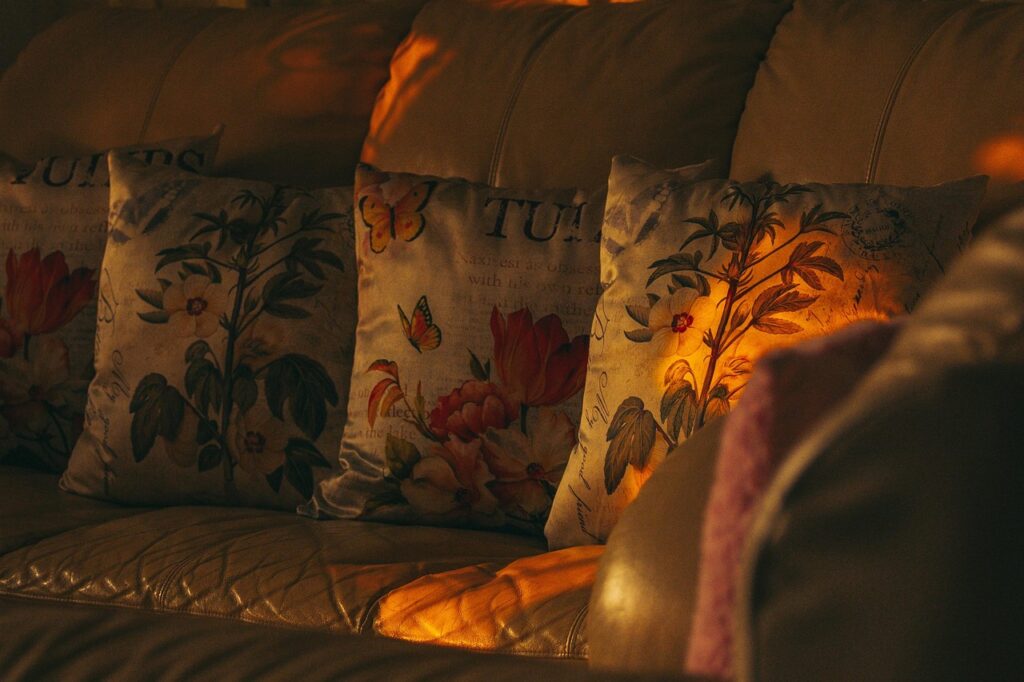
Implementing these five design elements doesn’t require a complete home renovation. By making strategic, incremental changes, you can transform your everyday experience and enhance your wellbeing significantly.
Start with These High-Impact Changes
Begin with these accessible modifications that yield immediate benefits:
- Lighting transformation:
- Replace standard bulbs with adjustable temperature LED options
- Add one task light to your most-used work area
- Install a dimmer switch in your main living space
- Strategic color additions:
- Introduce a calming color through accessories in spaces for relaxation
- Add energizing hues to areas where you need focus and productivity
- Remove or cover stark white walls with textiles or removable wallpaper
- Nature connection:
- Add 2-3 houseplants to your most-used spaces
- Incorporate one natural material (wood tray, stone coaster, wool throw)
- Position seating to maximize views of outdoors or natural elements
- Acoustic improvements:
- Add one soft textile element to each room (rug, curtains, throw pillows)
- Identify and address the most disruptive noise source
- Create one designated quiet zone in your home
- Multi-sensory enhancement:
- Introduce varied textures through textiles
- Add one pleasant, subtle scent element
- Create a personal “soundscape” with appropriate music or sounds
Remember that these elements work synergistically—their combined effect exceeds the sum of individual changes. As you implement these design strategies, you’ll likely notice improvements in sleep quality, stress levels, energy, focus, and overall satisfaction with your home environment.
A systematic approach to implementing wellbeing design elements creates environments that actively support physical and mental health.
Frequently Asked Questions

Common questions about implementing specific design elements for improved everyday wellbeing.
🌟 How quickly will I notice benefits from these design changes?
Some effects are almost immediate—studies show that exposure to biophilic elements can reduce stress hormones within minutes. Lighting improvements typically yield noticeable sleep and mood benefits within 3-5 days as your circadian rhythm adjusts. Color psychology effects are often felt immediately upon implementation. The full spectrum of benefits builds over time, with cumulative improvements in wellbeing becoming more pronounced after 2-3 weeks of consistent exposure.
🏢 I work in an office I can’t modify. How can I apply these principles there?
Focus on portable elements you can bring to your workspace: a small desktop plant, a personal task lamp with appropriate color temperature, noise-cancelling headphones, a natural material item for your desk (wood pencil cup, stone paperweight), and a small fabric element like a chair cushion. Even these modest additions can significantly improve your experience. Also consider a nature photograph as your computer background and short breaks to look out windows or step outside.
💰 What’s the most cost-effective design element to implement first?
Strategic lighting offers the highest return on investment. For under $50, you can purchase adjustable color-temperature LED bulbs for your main living areas and bedroom, which will immediately impact your circadian rhythm, sleep quality, and mood. The energy efficiency of LED lighting also reduces electricity costs, making this improvement essentially free over time. For zero-cost options, simply rearranging furniture to maximize natural light exposure can yield significant benefits.
🏠 How do I apply these principles in a small space like a studio apartment?
In smaller spaces, focus on multi-functional design elements: room dividers with sound-absorbing properties, plants that both purify air and add biophilic benefits, and lighting solutions that can adjust from task-oriented to relaxation modes. Use vertical space for plants and natural elements, and employ color strategically with smaller accents rather than large surfaces. Consider transformable furniture that can adapt to different needs throughout the day.
🧘 Can these design elements really improve specific health conditions like anxiety or depression?
While home design should never replace professional mental health treatment, research shows these elements can provide meaningful complementary support. Studies indicate that proper lighting can reduce symptoms of seasonal affective disorder by up to 40%, biophilic elements can lower anxiety scores by 30-40%, and appropriate color implementation can reduce subjective stress ratings by 20-25%. Always approach these as supportive strategies alongside appropriate medical or therapeutic interventions.
Which of these five design elements do you think would make the biggest difference in your current living space? Have you already implemented any of these strategies and noticed effects on your wellbeing? Share your experiences in the comments below!

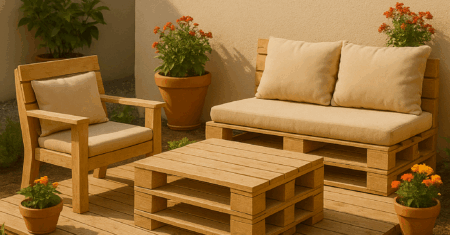
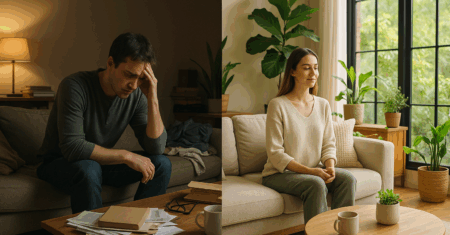

0 Comments